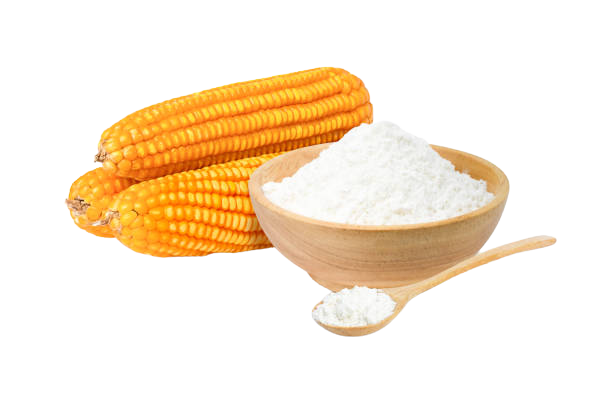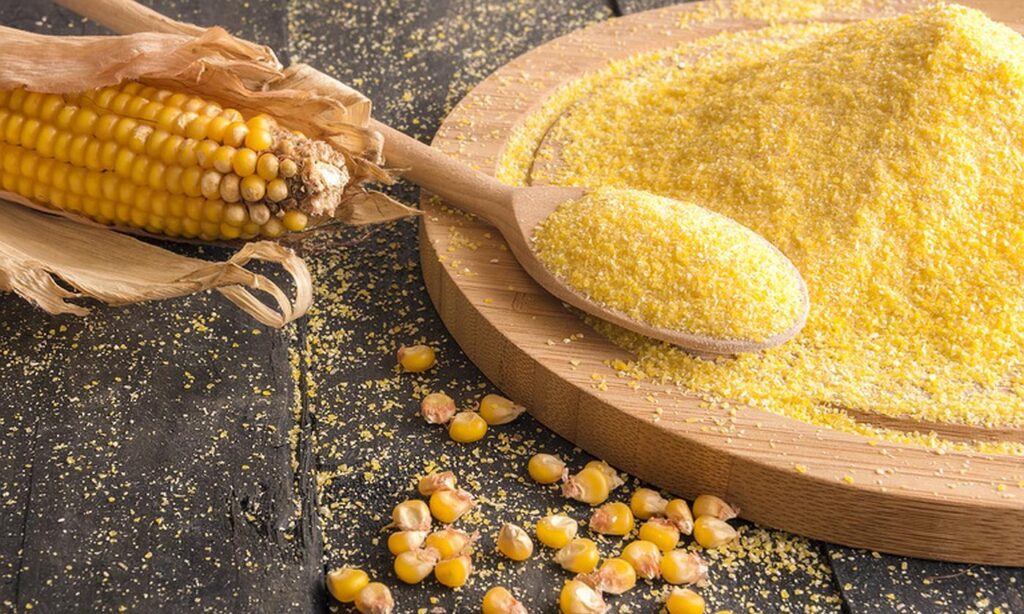Maize Starch
Maize starch, also commonly known as corn starch, has the chemical formula (C6H10O5)n. It is a fundamental ingredient in most packaged food and industrial products. Maize starch in natural, modified, pre-gelatinized, and dextrinized forms provides viscosity, texture, and other desired properties to all types of food & paper, products from canned chilled frozen to microwaveable goods, dry mixes, and extruded snacks. Starch is the starting material for manufacturing starch derivatives, which is often obtained from maize. Practically every industry in existence uses starch or its derivatives in one form or another.

- Overview
- Application
- Spesification
Corn starch, maize starch, or cornflour (British English) is the starch derived from corn (maize) grain. The starch is obtained from the endosperm of the kernel. Corn starch is a common food ingredient, often used to thicken sauces or soups, and to make corn syrup and other sugars. Corn starch is versatile, easily modified, and finds many uses in industry such as adhesives, in paper products, as an anti-sticking agent, and textile manufacturing. It has medical uses as well, such as to supply glucose for people with glycogen storage disease.
Like many products in dust form, it can be hazardous in large quantities due to its flammability see dust explosion. When mixed with a fluid, corn starch can rearrange itself into a non-Newtonian fluid. For example, adding water transforms corn starch into a material commonly known as oobleck while adding oil transforms corn starch into an electrorheological (ER) fluid. The concept can be explained through the mixture termed “cornflour slime”.
Manufacturing Process
Maize starch is extracted from the white heart of the corn kernel and has a distinctive appearance and feed. Other sources of starch include potatoes, wheat, tapioca, and rice. The corn is steeped for 30 to 48 hours, which ferments it slightly. The germ is separated from the endosperm and those two components are ground separately (still soaked). Next the starch is removed from each by washing. The starch is separated from the corn steep liquor, the cereal germ, the fibers and the corn gluten mostly in hydrocyclones and centrifuges, and then dried. (The residue from every stage is used in animal feed and to make corn oil or other applications.) This process is called wet milling. Finally, the starch may be modified for specific purposes.
Although mostly used for cooking and as a household item, corn starch is used for many purposes in several industries, ranging from its use as a chemical additive for certain products, to medical therapy for certain illnesses.
Food Industry
Maize starch is used as a thickening and gelling agent for its viscosity and opaqueness in sauces, soups, gravies, and various desserts. It is also an effective binder and stabilizer to give the necessary texture and sweetness to bakery products. Maize starch is used to produce high maltose syrup, high fructose syrup, and maltodextrin. Maize starch is also used in fermentation to produce monosodium glutamate and citric acid.
Adhesives Industry
The major use for starch-based adhesives is in so-called converting processes applied to paper and paperboard. These processes include the fabrication of corrugated boxboard, paper bags, folding cartons, laminated paperboard, and spiral-wound tubes, as well as off-machine pigment coating of paper and making of gummed labels and tapes.
Chemical Industry
Maize starch is an economical fermentation feedstock to produce many organic chemicals such as ethanol. It is made by fermenting sugars from corn starch and ethanol from corn starch, which promises to be a renewable source of fuel for care and other engines with environmental advantages.
Paper Industry
During papermaking, maize starch is used to provide dry strength and as a surface improvement aid in alkaline papermaking. Starch is also a critical part of wet-end sizing. It is an integral part of micro-particle retention and works as a binder water holding agent and carrier for surface sizing chemicals and other functional additives.
Textile Industry
In the manufacture of textiles, starch keeps the yarn straight and strong, significantly improving its ability to chemically withstand the stress of weaving.
| Maize type | Moisture | Ash | Protein | Crude fibre | Ether extract | Carbohydrate |
| Salpor | 12.2 | 1.2 | 5.8 | 0.8 | 4.1 | 75.9 |
| Crystalline | 10.5 | 1.7 | 10.3 | 2.2 | 5.0 | 70.3 |
| Floury | 9.6 | 1.7 | 10.7 | 2.2 | 5.4 | 70.4 |
| Starchy | 11.2 | 2.9 | 9.1 | 1.8 | 2 2 | 72 8 |
| Sweet | 9 5 | 1 5 | 12.9 | 2.9 | 3.9 | 69.3 |
| Pop | 10.4 | 1.7 | 13.7 | 2.5 | 5.7 | 66.0 |
| Black | 12.3 | 1.2 | 5.2 | 1.0 | 4.4 | 75.9 |



